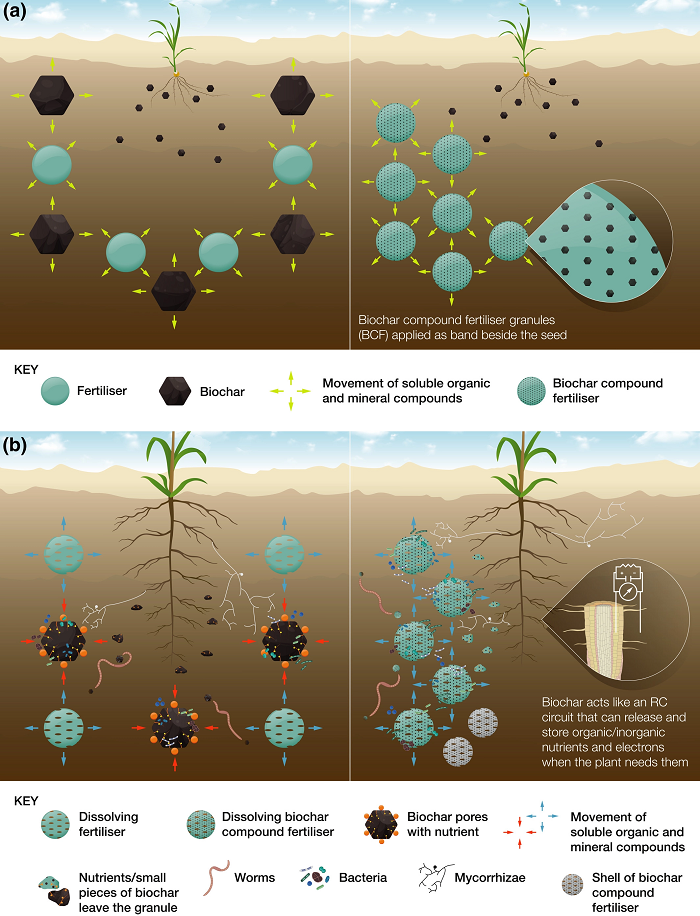How biochar works (and when it doesn't)
Abstract
Biochar is increasingly recognised as having potential as a negative emissions technology, that can also provide benefits for food production and land management. Thousands of biochar studies have been published over the last decade, including many reviews and meta-analyses. The wide range of results reported in the literature is difficult to reconcile without process-based understanding. It has inhibited adoption and support by regulators, climate policy-makers and land managers. This review seeks to clarify the basis for divergent results, and identify the circumstances where biochars are most effective.
We synthesised 20 years of biochar research to determine the processes that govern the effects of biochar on soil properties and plant growth. We investigated the basis for divergent responses between studies, and identified knowledge gaps. We applied our mechanistic understanding to make recommendations on the most effective uses of biochar.
We describe three stages of reaction: dissolution (1-3 weeks); reactive surface development (1-6 months); and aging (beyond 6 months). By increasing pH, porosity and water availability, biochars can create favourable conditions for root growth and function. Biochar-soil-plant interactions, especially in the rhizosphere (zone around the root), can enhance nutrient uptake and disease resistance, reduce availability of heavy metals, improve resilience of plants to environmental stressors, and stabilise biochar and soil organic matter. Meta-analyses show average crop yield increases of 10-42%, with greatest response in acidic and sandy soils. As biochar ages, it is incorporated into soil aggregates, protecting the biochar carbon and promoting stabilization of rhizodeposits (organic material released from plant roots) and microbial products. Biochar carbon persists for hundreds to thousands of years.
Biochar properties vary widely, determined by feedstock and production conditions, and response is also affected by how biochar is used: pre- or post-production treatment of biochar; the soil type and rate of application. This is the explanation for the wide range of results reported in the literature. To use biochar effectively, to deliver agronomic benefits and GHG emission reduction in addition to carbon sequestration, biochar formulations should be chosen to match site-specific constraints. Used wisely, biochar can play a significant role in climate change mitigation, and supporting food security and the circular economy
Authors
Stephen Joseph - School of Materials Science and Engineering, University of NSW, Kensington, New South Wales, Australia
Annette Cowie - NSW Department of Primary Industries/University of New England Armidale, Australia
Lukas Van Zwieten - NSW Department of Primary Industries, Wollongbar, New South Wales, Australia
with: Nanthi Bolan, Alice Budai, Wolfram Buss, Maria Luz Cayuela, Ellen R. Graber, James A. Ippolito,Yakov Kuzyakov, Yu Luo, Yong Sik Ok, Kumuduni N. Palansooriya, Jessica Shepherd, Scott Stephens, Zhe (Han) Weng, and Johannes Lehmann
Journal
GCB-Bioenergy , Volume 13, Issue 11 Pages 1731-1764
Year Published
2021